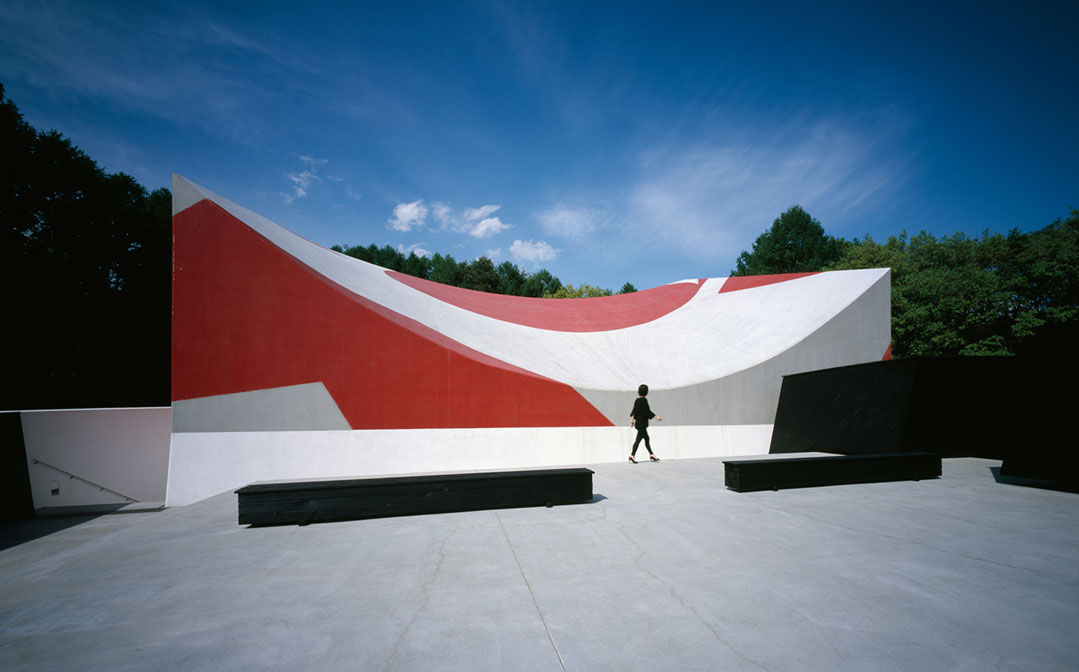Architecture Designed by the Arts
Profiled Firm: Atsushi Kitagawara Architects | Location: Tokyo, Japan

A talented artist who had pursued philosophy and painting, Atsushi Kitagawara decided to devote his life to the craft of architecture at the age of 21, after winning first place in the Japan Architect International Design Competition. But he did not abandon his other pursuits; rather, he incorporated them.
“Architecture is an incubator of high creativity with the potential to provide better solutions to meet requirements, satisfy conditions, and create programs that stimulate the human imagination and generate new meaning,” he says. His reinvention of architectural forms continues to inspire and delight those who live and work in his spaces.
In 1982 Kitagawara launched his firm, Atsushi Kitagawara Architects, with a staff of ten. Japan was experiencing an economic boom, and by the time Kitagawara was 35, he employed 20 professionals. At the age of 40, he designed a large-scale factory complex called ARIA, and four years later took the coveted Architectural Institute of Japan’s prize for the Big Palette Fukushima International Exhibition and Convention Center. These two projects shifted the firm’s focus toward public architecture.
The Big Palette Fukushima: Oasis in the Urbanscape
Completed in 1998 and covering 23,000 square meters, the Big Palette Fukushima complex was the largest space that Kitagawara had designed up to that point. Its technologically advanced design features a column-free 5,500-square-meter multi-purpose exhibition hall, and a 1,000-square-meter international conference hall that can seat up to 1,000 people, along with space for conference rooms and service facilities.
Kitagawara designed the structure to capture the essence of water, “the incubator of all life.” He and his team designed an outdoor canopy out of carbon fiber reinforced plastic (CFRP) to protect the outdoor exhibition space from rain while allowing light to flow through. The pedestrian deck boasts horizontally connected hyperbolic paraboloid structured shells, and the outer shell has reverse conical fan columns that connect keel trusses, creating dynamic spaces.
Kitagawara used Vectorworks Architect software for the first time for this project. He and his team learned the software quickly. “I remember that the staff at my office had difficulty at first because the prevalence of CAD in Japan was very low at that time, but by final design, they began to draw at relatively fast speeds,” he recalls.
The firm used Vectorworks to collaborate with various other team members, including the structural engineer, installation engineer, landscape designer, and lighting designer. “Using Vectorworks as our common CAD application, we could easily exchange compatible files and meet tight design and supervision schedules,” he says.
The Heart of All Humanity: The Nakamura Keith Haring Collection
Kitagawara’s design for the Nakamura Keith Haring Collection won the Japan Art Academy Prize, the Murano Togo Prize, the Japan Institute of Architects Japan Architecture Award, and the American Institute of Architects Japan Design Award, among others.
This museum and spa complex sits quietly in a lush forest 1,000 meters above sea level at the foot of Mt. Yatsugatake, an ancient active volcano in Kobuchizawa, Japan. When they designed the building, Kitagawara and his team were mindful of the surrounding trees, designing a one-story building to protect them. Kitagawara and his team used Vectorworks’ 3D modeling capabilities to visualize the complicated shapes throughout the building and to provide various perspectives for their client, Museum Director Kazuo Nakamura.
This unusual museum has a commanding view of the Japanese South Alps. Across the courtyard, the famous South American relaxation spa KUROTEL taps the hot springs that were once used by the Jomon people, who prospered here from 8000 to 7000 B.C. “I like the hot spring that wells up from the museum site. When I have a bath in the hot spring that gushes from the earth of Mt. Yatsugatake, I can imagine the ancient people of the Jomon,” says Kitagawara.
Like a Poem
Kitagawara infuses his architecture with art. He draws inspiration from human imagination and behavior, society, nature, and life. “Spaces and environments are our places to live and reflect our society’s fundamental values,” he says. “My responsibility when designing them is very high, and I would always like to create the best solution. I think that spacious areas and surroundings have a strong emotional aspect, as well as a scientific and logical one. In short, I always seek spaces and environments in which reason and emotion co-exist, like a poem.”
